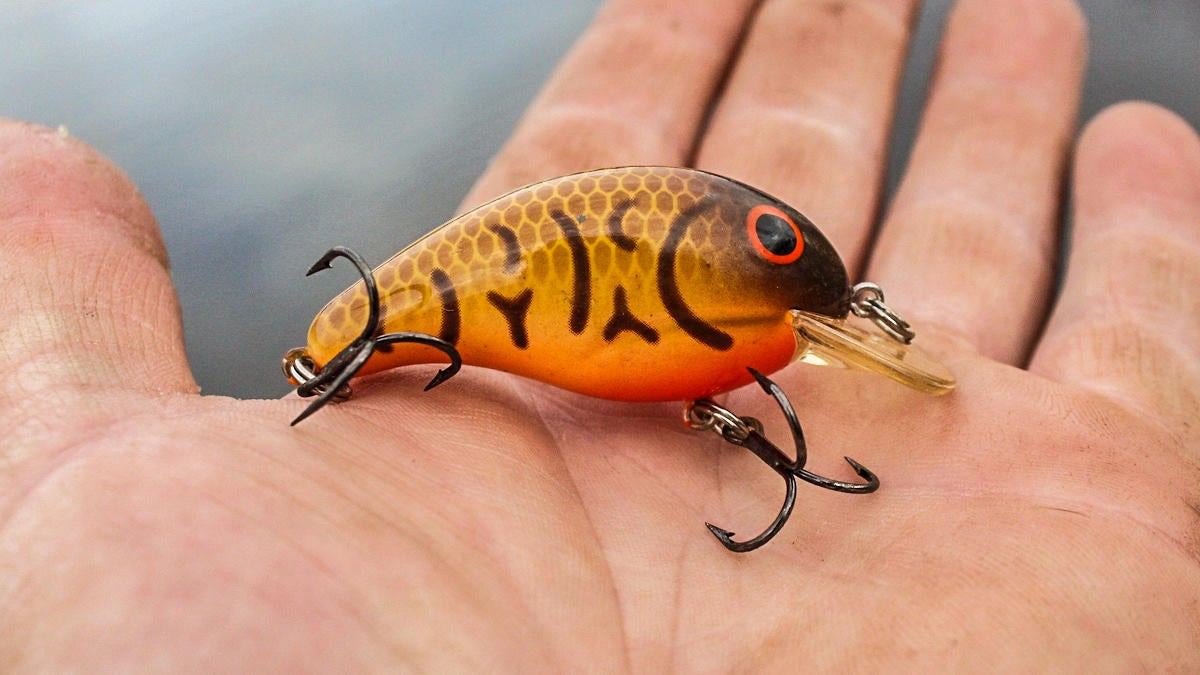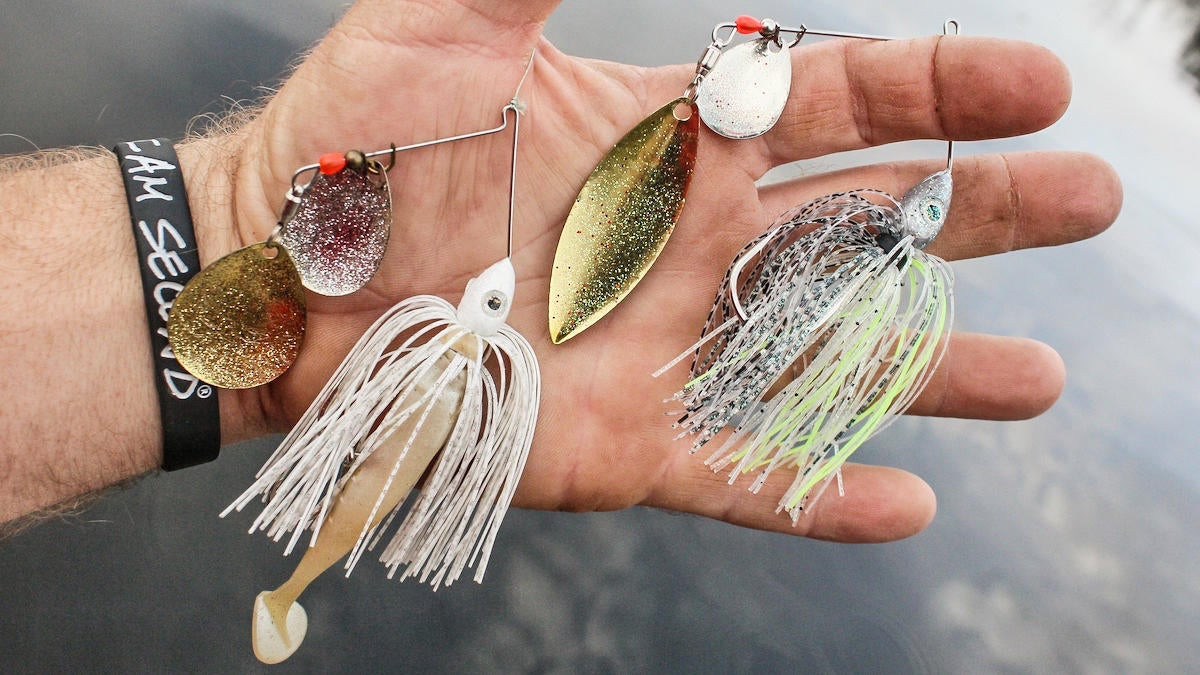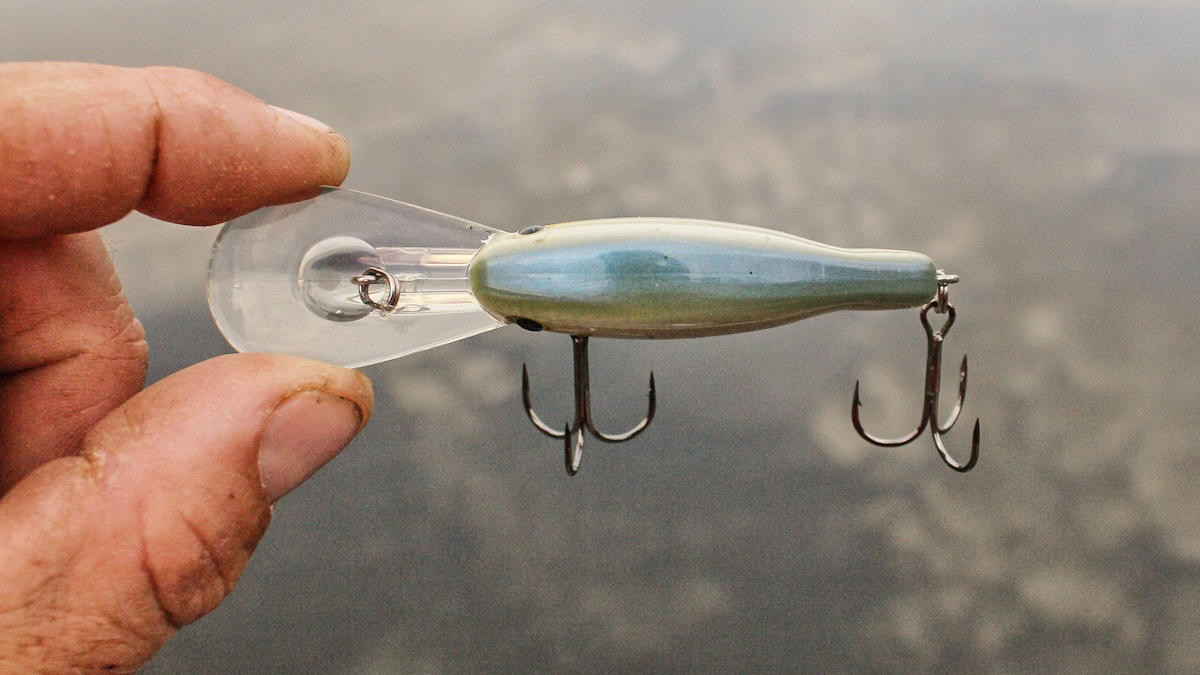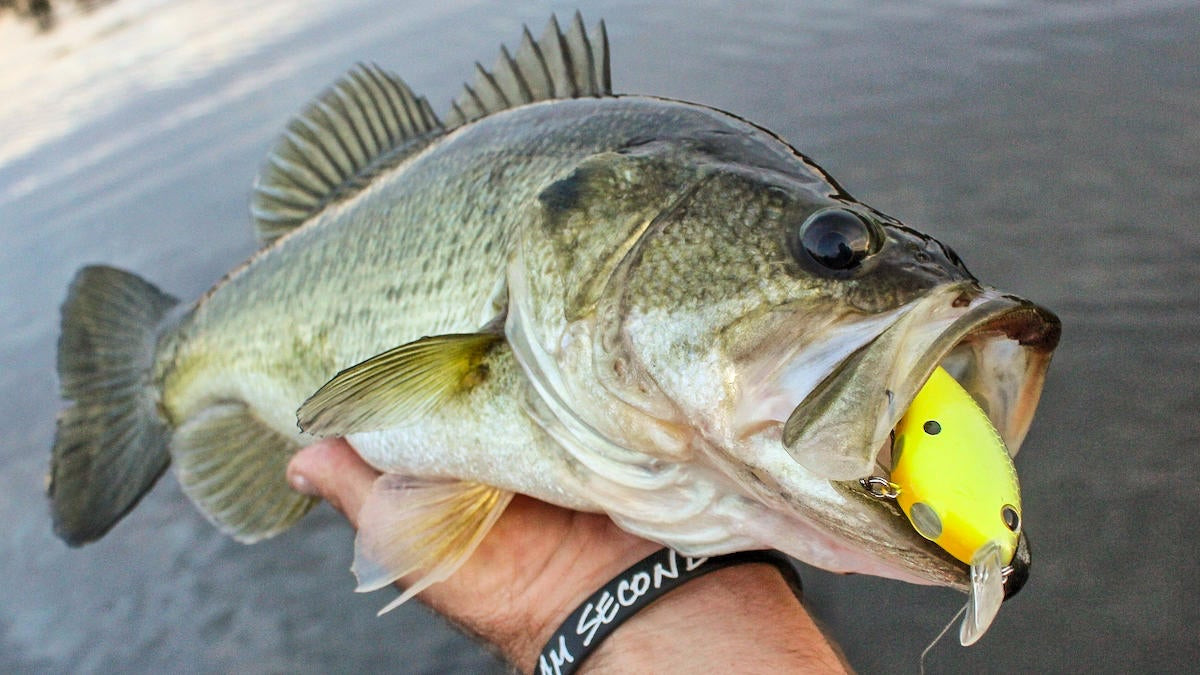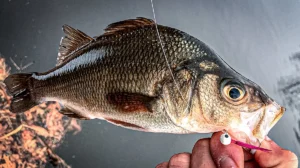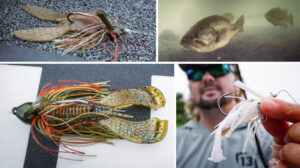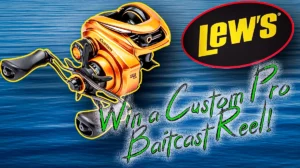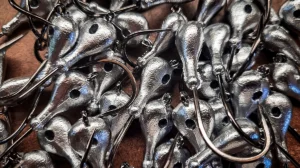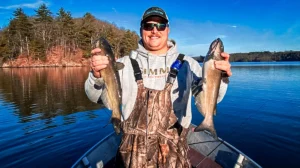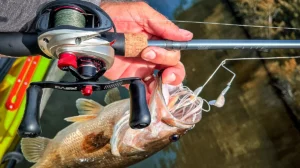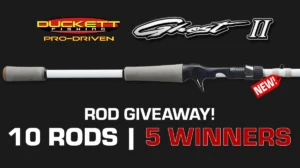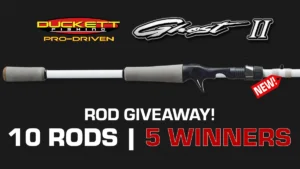Bass fishing with water temperatures in the 40s is cold… like, really cold. It’s not as bad as what our northern brethren are faced with when having to decide between staying home or sitting on a bucket over a hole in the ice. But it’s plenty cold for an Alabama boy who would rather winter even further south if I could.
However, the bass are still biting and choosing to fish water in the 40s gives you a chance to have some of the best days on the water you’ll have all year. For one, there are far fewer boats. Most of the tournaments have either wound down as we work into the winter or haven’t started up yet as we move towards the early spring. And most anglers don’t think of this time of year when they hear the phrase “fun fishing”. So whether other anglers are hunting or whatever the case may be, the water isn’t nearly as crowded.
Now if you’re going to go fishing when it’s this cold, you need to be prepared. Safety is a concern, especially if fishing alone. If you fall in the water when it’s this cold, you’re seconds away from the first stages of hypothermia setting in. So be prepared and mindful of that. But outside of that, all you need are a few baits, some patience and a hard head and you’ll be catching bass in no time.
Here are five baits for shallow-water bass when the water temperatures dip into the 40s.
Squarebill crankbait
Probably my favorite bait to fish in cold water, a squarebill catches big ones. No matter the cover and in almost any water color, you can put a squarebill in your hand and just go, knowing you have something a shallow-water fish will have a hard time passing up. That being said, there will be times when you need to give them a second look to draw the strike… or perhaps even a fifth or a sixth look.
Bass are cold-blooded creatures, so when the water gets super cold, their metabolism slows down and they try to conserve as much energy as they can. They won’t often move far or fast and instead just sit still and try to absorb heat either from the sun or from some object around them. Due to this unwillingness to move about, a lot of anglers think they have to drag something around and give up on moving baits right away. That’s not the case at all.
You should slow your retrieve to a crawl but I use moving baits 90% of the time when the water is in the 40s. The key, however, is that you have to be super thorough. Imagine a fish is sitting to the left of a log and you throw to the right. In the spring, summer or fall, that fish very well may swim to the other side of that log and chase down your bait; I’ve seen the mud they kick up when they do it. This behavior is extremely unlikely in the winter.
Instead, you have to hit them right on the nose and sometimes, you even have to do that multiple times to get them to bite. In the winter, I’ll make the same cast a half-dozen times if I come to a piece of cover that looks really good or has been particularly productive in the past. And sometimes it takes those extra casts to draw the strike, even in less than a foot of water.
Spinnerbait
Honestly, it’s a toss-up for me between spinnerbaits and squarebills in cold water. Both are my favorite for this style of fishing on certain days. The weather is the determining factor when it comes to which I’ll choose. On sunny and calmer days, I’ll typically lean towards the squarebill. But add a little wind and cloud cover to the equation and the calculus almost always kicks out a blade. That being said, both are still great options in any weather when the water is super cold. So if you’re considerably better with one or the other, you should pick your strength.
A spinnerbait is perhaps the most versatile bait out there, second maybe only to a jig. A spinnerbait can be used in all four seasons in less than a foot of water all the way down to deep-water ledges. You can burn it, slow roll it, pump it and pause it; there’s so much you can do with a spinnerbait. But when it’s in cold and shallow water, you need to slow your roll.
You want to pick a spinnerbait with large blades for a couple reasons. One, the vibration obviously helps the fish locate the bait in muddy water and even in less stained water I believe that same vibration helps trigger the fish into biting. But big blades also offer more resistance and, in turn, allow you to slow down your bait on the retrieve. Whether I’m going with a tandem Colorado/willow combo or double Colorado blade, I like for my outside blade to be in the 5 or 6 size and then compliment both with a smaller Colorado (around a No. 3 or 4) on the inside.
Slow rolling a spinnerbait around docks, logs, stumps and through treetops is one of the most productive ways to catch fish and to catch big ones in particular, once the water reaches the 40-degree range. Spinnerbaits have just the right combo of color options, flash and vibration to trigger reluctant bass. But when it gets really cold, nearing the 40-degree mark, this next bait is hard to beat.
Jerkbait
Though I’ll confess I’m no jerkbait aficionado, I’ve had my teeth kicked down my throat often enough by this bait in the dead of winter to put it firmly on the list of my top five baits for shallow and cold water. But it’s not only here because of the damage its done to my bruised and battered ego. A jerkbait also offers something different from any other bait on this list – the ability to target fish that are loosely relating to cover as opposed to holding tightly to it.
For the crankbaits, spinnerbaits and jigs that comprise the rest of my top five, you’re going to want the bait to be extremely close to the cover. If you’re cranking riprap, you want your bait bumping bottom. If you’re slow rolling a spinnerbait down the side of a log, you want to try to scrape the bark off.
But with a jerkbait, you’re able to target suspended fish that are loosely relating to cover. Take a riprap bank or bridge pilling for a couple of examples. The fish may be sitting 10 to 20 feet from the cover but they are relating to that cover while waiting for baitfish that are also relating to the cover to pass by. A jerkbait gives you a great bait to toss into that scenario and trick a bass into biting.
Cadence is key; you’ll hear that a lot anytime someone mentions a jerkbait and rightfully so. When you figure out the right combo of pumps and pauses, it can unlock every fish’s jaw in the area. But I’ve seen the pump, pump, pause 3 seconds, pump, pause 10 seconds cadence work wonders in super cold water and I’ve watched Hank Cherry work a jerkbait just as fast as he possibly could in super cold water and absolutely wreck them. So, yes, cadence is key. But it’s not a one-size-fits-all deal. Play with it and figure out the combo that works best that day and you’ll be on your way to a big bag.
Compact jig
Whether we’re talking a compact flipping jig in 3 feet of muddy water around stumps or a compact finesse jig dragged across a gravel bar in 5 feet of clear water, small jigs catch big fish in the winter. I don’t often slow down to a jig, even in the winter. But that says more about my style of fishing than it does about fishing in general. I know guys who lay with a jig all day in shallow, cold water and they are hard to beat.
When I do slow down to a jig, it’s typically when I’ve found a concentration of fish. Whether I’ve gotten into a muddy creek with a lot of fish hanging tight to isolated cover like rocks or stumps or I’ve found an offshore hard spot that’s holding a group of fish, pitching and dragging a small jig gives me the approach I want. I don’t have to worry as much about the fish slapping at a treble-hooked bait or spinnerbait and not getting the hook well. Instead, I can just pick off the fish one by one.
It’s easier to be accurate with a jig and you’re less likely to hang up if you pick the right jig. Pay attention to the style jighead you’re buying. Jigs are intentionally designed for the style of fishing you’re going to be doing with them. A compact skipping jig like the Nichols Lures Casting Jig with an almost Arkie-style head is my favorite all around jig if I had to choose just one. But that jig was designed primarily with skipping in mind.
Baits like the Nichols DB Finesse Jig you see pictured here are designed primarily for pitching and flipping in thick cover. Then you have ball head and football head jigs meant more for dragging, each with a different shape to the head and orientation of the eye. All of that is important when picking a jig. What I believe holds true across the board in cold water, you want a compact jig 99% of the time. There’s no call for a huge flowing skirt or big flapping craws. Nice, tight and compact is the way to go in the cold.
Flat-sided crankbait
I saved the most synonymous bait with cold water for last, though it’s also the most sanctimonious. If you Google “bass fishing in cold water”, half of the results that fill your feed will be about flat-sided crankbaits, likely many being made of balsa. And that’s for good reason; they work extremely well. But I personally never drank that particular flavor of Kool-Aid.
To be fair, I have caught fish and some good ones on flat-sided crankbaits. But I married a squarebill early on in my fishing and she’s been hard to cheat on. Where I will venture into the flat-sided realm more often is when moving to that depth the square bills can’t go. Once I’m fishing more that 5 feet deep and looking to crank, it’s time to decide between a Shad Rap-style lure and a medium-diving flat-sided bait and typically I’ll go with the flat side.
The reason isn’t related to the productivity but instead the fishability. A Shad Rap and baits like it, are extremely productive in cold water. In fact, as much or more so than several of the other baits previously mentioned here. However, most of them are hard to throw, especially in wind and require a spinning rod to get much distance out of them. A flat-sided medium diver like the Strike King KVD 1.5 Flat here has a similar tight action but is a good bit easier to cast on a baitcaster, which is enough to sway me in its direction quite often.
In conclusion
If you can stand the cold, these are a handful of options that work well in cold water. When the water temperatures are in the high 40s, you can afford to fish a little looser and quicker, but not much. As the temps bottom out, you’ve really got to slow down. You’ll notice patterns too this time of year.
Often your most productive times of the day will be the first 30 minutes, last 30 minutes and the middle of the day from say 10 a.m. to 2 p.m. on sunny days. That’s the time of day the fish will get the most sunshine to warm them up. So there’s often a lull at times, especially mid morning after that initial bite. Then if there’s a front moving through at anytime of the day, the norm holds true and the fish will typically be more active then.
Keep those windows in mind and try to make the most of them by putting yourself in the most productive places at the right times. Take one of these baits and take your time and you’ll be setting yourself up for a good day on the water. One with far fewer boats than you’ll see the rest of the year.



